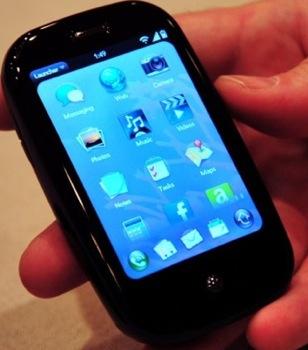

Like most others in the technology industry, when I heard about the Palm Pre, I was excited. Destined to land on Sprint, it would be a great device to market their Simply Everything plan, and if successful, would result in a boost in Sprint's customer base. But after months and months of hearing "Pre" come out of every Sprint representative's mouth at every possible opportunity, I became a bit concerned.
Don't get me wrong; I think Sprint has a great deal of potential, and I am pleased that they signed on for the Pre. It's a fantastic starting point for the company, and if executed properly, will be a successful launch. But I feel as if Sprint is overlooking the bigger issue: it will require much more than a device to turn around a company that lost 4,591,000 customers and $2.79 billion in 2008. Despite the feature similarities, this device is not the iPhone. Before Palm Pre die-hards bash me on this point, I'm not referring to the actual functionality of the device, but rather the large exclusivity period difference between the two phones, and on a larger scale, the vital stats of the company in question. As unfortunate as it may be, Sprint doesn't have the luxury of a five-year agreement with Palm; rather, they have six months to push as many out the door as they can before Verizon and AT&T launch it next year.
With the launch of the iPhone, the five year exclusivity agreement effectively forced everyone that wanted the device onto AT&T. After all, you could either purchase the device in 2007, or wait until 2010, when the supposed exclusivity agreement expired. Three years for anyone is a long time, technology nerds and normal consumers alike. Six months, on the other hand, is only going to sway technologically savvy people; in other words, those that want the device immediately. Thanks to the recent press coverage about Verizon and AT&T picking the Pre up, I'm concerned that the rest are going to wait until their carrier of their choice adopts the device. Think about it this way: the sacrifice between "network I like" and "phone I like" is more of a reality when there is three years in between versus six months.
What's worse, recent reports of supply issues lead me to believe that the carrier won't even have a full six months to effectively market the Pre. The nightmare scenario goes like this: Sprint launches the device on June 6th. They sell through their estimated 30,000 available devices in the first 48 hours. Then the supply kinks, which Dan Hesse has spoken of, take place. True availability comes in late July or early August. From that point, Sprint has four months to market the Pre until another carrier picks up the phone. Regardless of how they approach it, four months isn't enough to sway the general population from a carrier they are pleased with to a new one simply for a device. Five years, yes. Four months, no. They'll wait it out on their current carrier.
The Pre is a fantastic prescription for Sprint, but they're going to need much more to return their vital stats to normal. Most importantly, Sprint needs to continue their focus on improvement of customer service and other internal methods that benefit their existing client base. After all, when you have a bathtub that leaks, ideal success often comes when you repair the leak before adding more water.
- Log in to post comments
